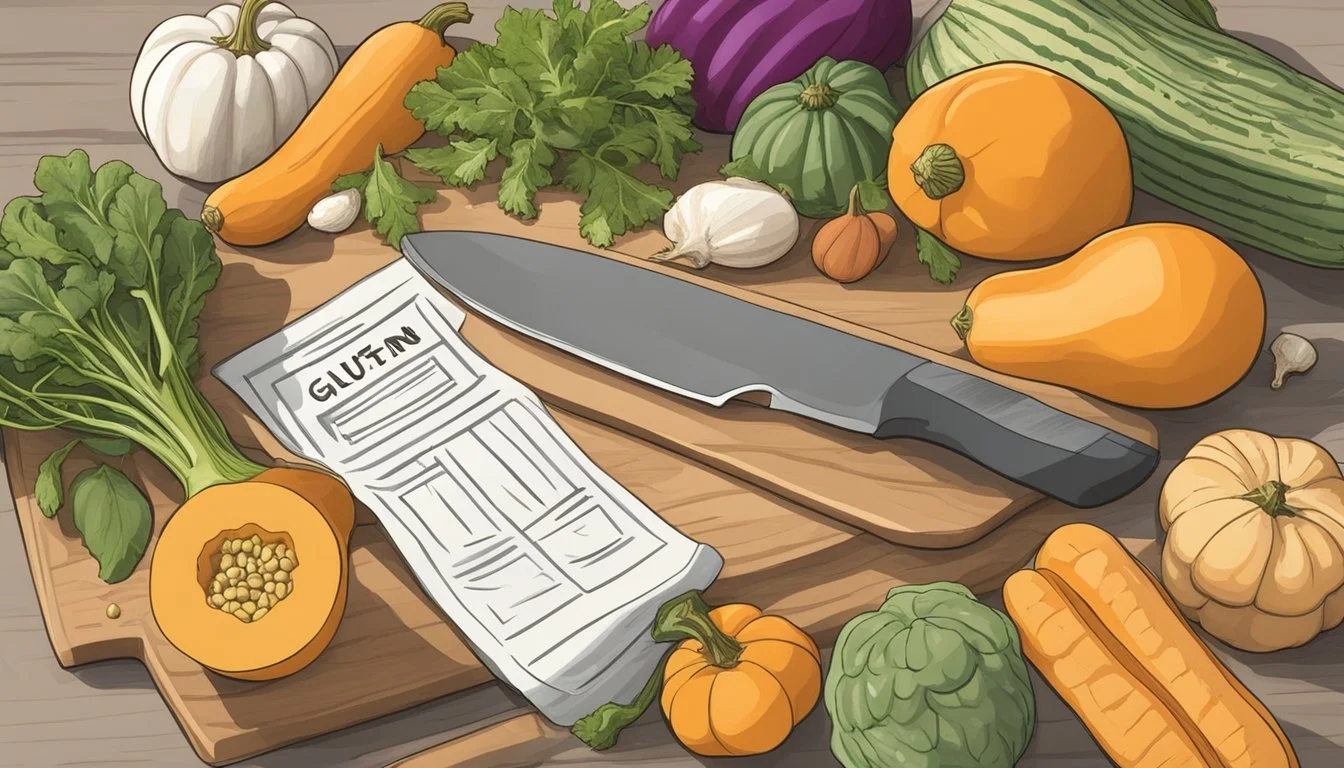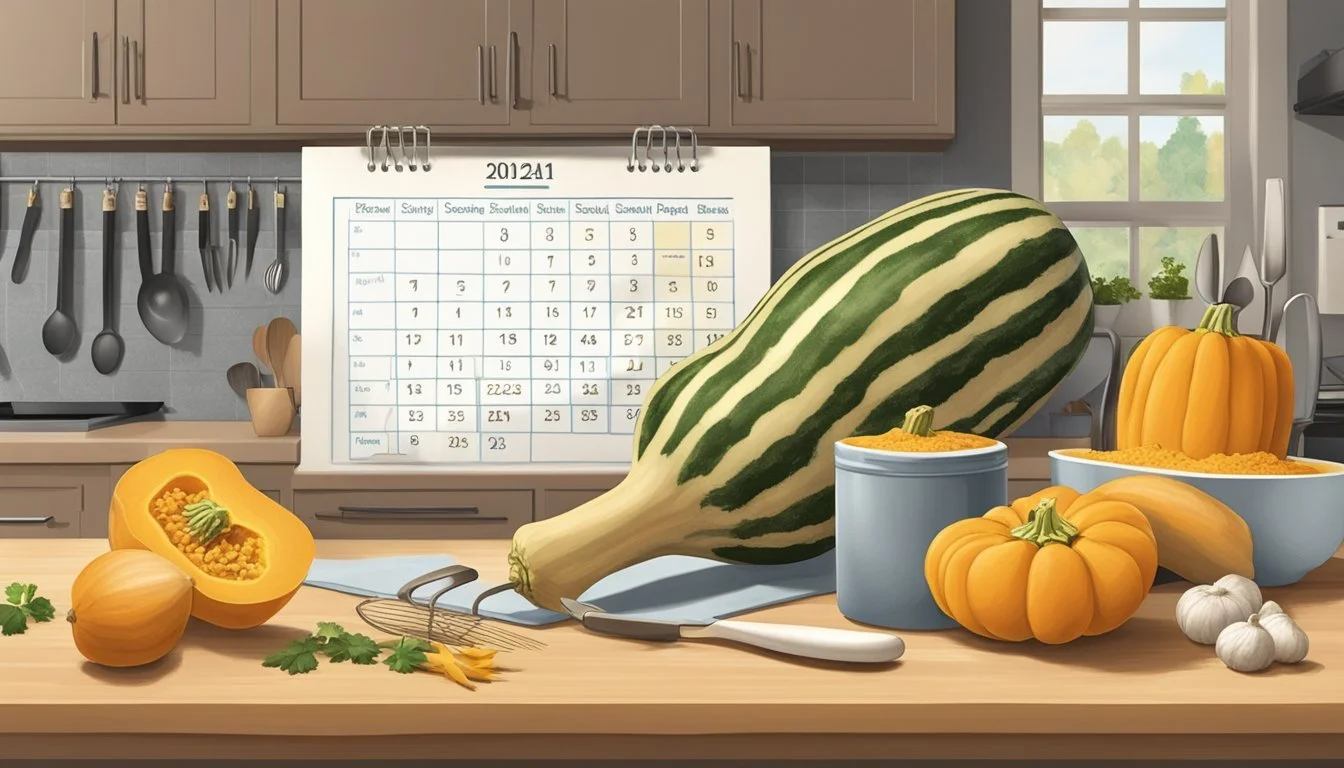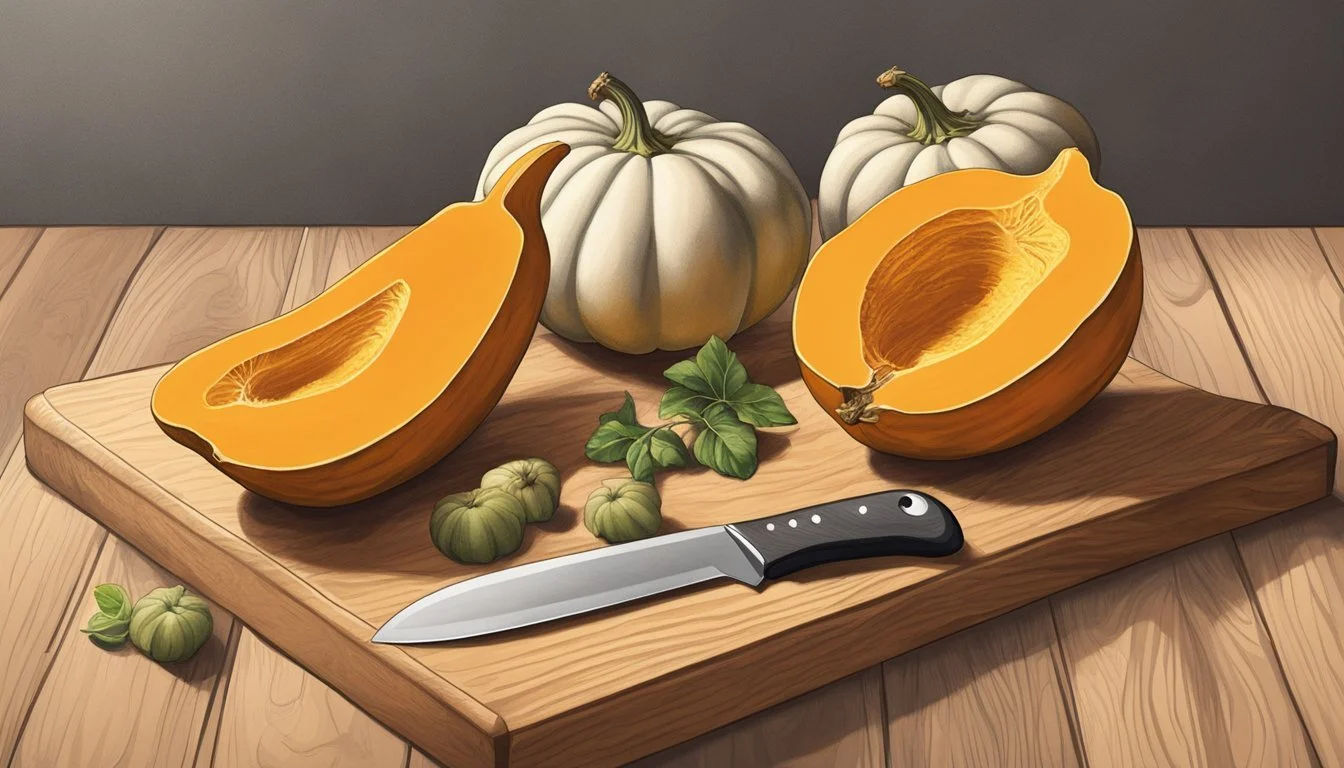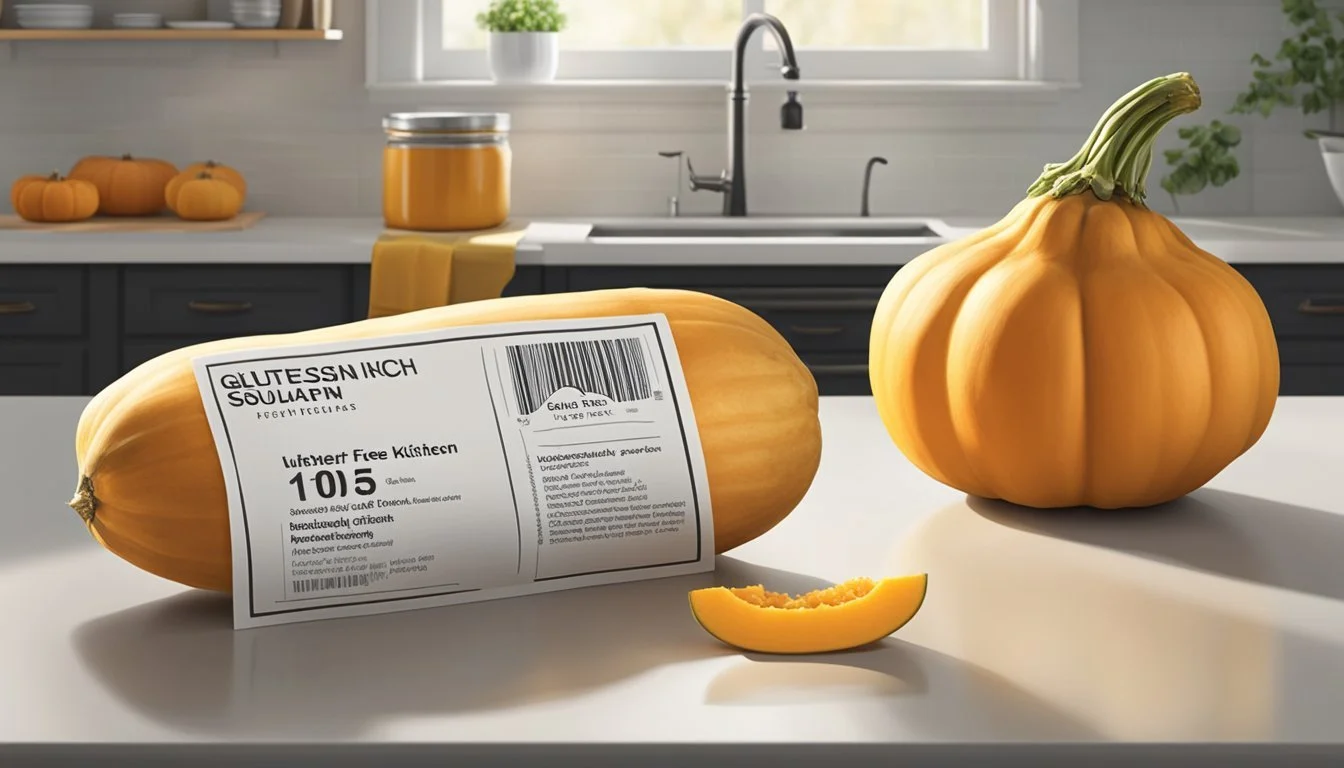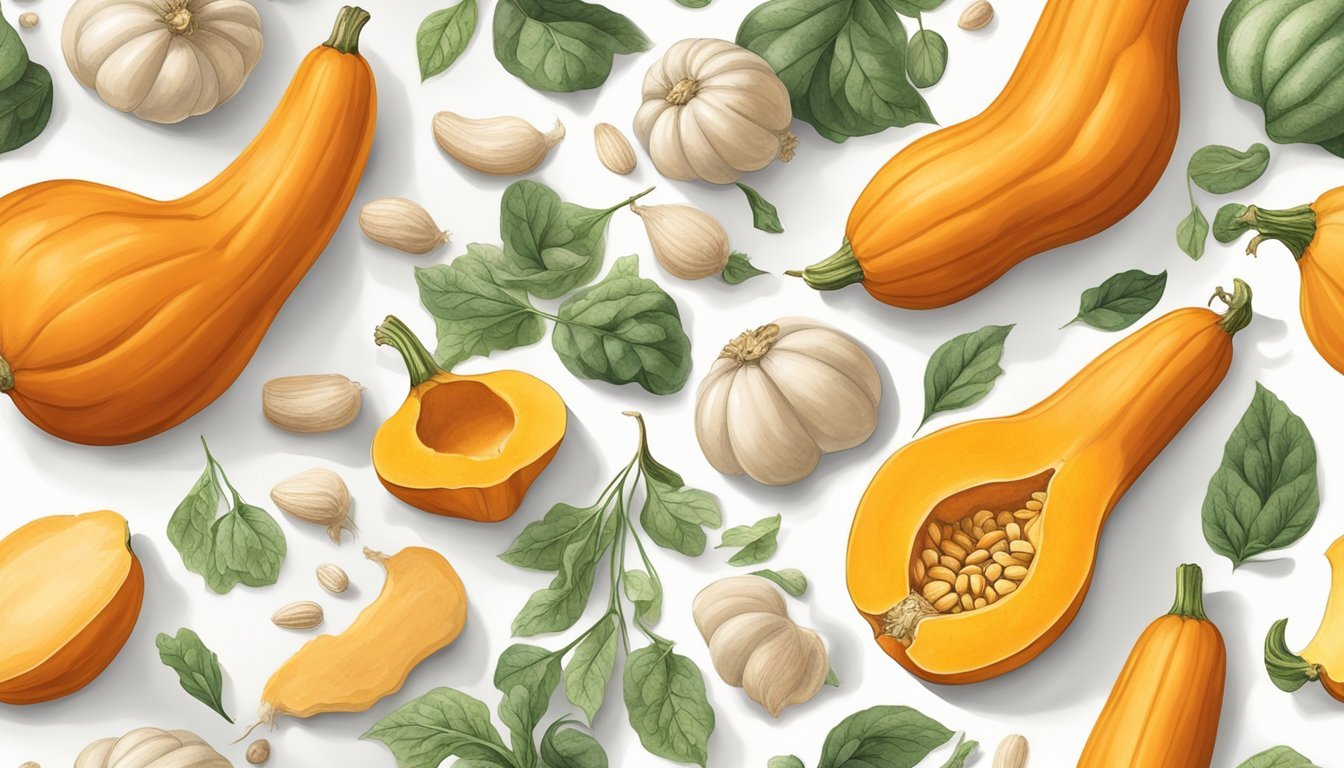How Long Does Gluten-Free Butternut Squash Last?
Storage Tips and Shelf Life
Butternut squash is a versatile and healthy addition to any gluten-free diet. This nutrient-packed vegetable can be stored effectively to maintain its freshness and nutritional value. When kept in a cool, dark place, a whole butternut squash can last for 1 to 2 months without losing its quality.
For gluten-free enthusiasts, understanding how to store butternut squash properly can make meal planning more efficient and economical. After slicing, the squash needs to be refrigerated to extend its shelf life. Refrigerated sliced or chopped butternut squash will keep for 4 to 5 days.
Whether using it in soups, roasted dishes, or purees, knowing the shelf life of butternut squash ensures you fully benefit from its rich nutrients while adhering to a healthy, gluten-free dietary lifestyle. Proper storage techniques can significantly impact the longevity of this beneficial vegetable.
Understanding Butternut Squash
Butternut squash is a versatile vegetable well-known for its distinctive shape, nutritional benefits, and health advantages. This section explores its anatomy, nutritional profile, and health benefits to provide detailed insights into this popular squash.
Anatomy of Butternut Squash
Butternut squash, scientifically known as Cucurbita moschata, features a bulbous base tapering to a more cylindrical neck. When cut open, it reveals a firm, orange flesh surrounding a cavity filled with seeds and fibrous strands.
The skin is smooth and tan when mature, providing natural protection. Inside, the flesh is dense and slightly sweet, often compared to pumpkin in texture and flavor. Unlike some squashes, butternut contains more flesh relative to its size, making it ideal for various culinary uses.
Nutritional Profile
Butternut squash is nutrient-dense, offering substantial vitamins and minerals. A single serving (about 1 cup) includes:
Calories: 63
Fiber: 3 grams
Potassium: 493 mg
Vitamin A: 1140 μg RAE (126% of daily value)
Vitamin C: 31 mg (34% of daily value)
The high fiber content aids digestion. The notable presence of potassium helps regulate blood pressure. Vitamins such as A and C contribute to immune function and skin health. Moreover, it contains smaller amounts of Vitamin E, B vitamins, and antioxidants like beta-carotene.
Health Benefits
Regular consumption of butternut squash offers numerous health benefits. The high fiber aids in maintaining digestive regularity and can help in managing weight by promoting satiety.
Rich in Vitamin A, it supports eye health and immune function. Vitamin C provides antioxidant properties, bolstering the body’s defense against diseases. Furthermore, potassium is crucial for cardiovascular health, reducing the risk of hypertension.
Butternut squash also contains antioxidants, which combat oxidative stress and may reduce the risk of chronic diseases. Its nutrient profile supports overall health and well-being, making it a valuable addition to any diet.
Selecting and Preparing Butternut Squash
Selecting and preparing butternut squash properly can significantly impact its taste and shelf life. Key factors include choosing fresh squashes and using safe and effective preparation techniques.
Choosing the Right Squash
When selecting a butternut squash, it's important to choose one that feels firm and heavy for its size. The skin should be smooth, without any cuts or bruises. A matte skin is preferable over a shiny one, as this indicates that the squash is at its peak ripeness. Avoid squashes with soft spots or mold, particularly around the stem.
A ripe butternut squash can be stored in a cool, dark place. Consistently checking the squash for any signs of spoilage can help in maintaining its quality over a longer period.
Preparation Techniques
Before cooking, butternut squash needs to be washed and dried to remove any residual dirt. Placing the squash on a sturdy cutting board will help maintain safety while cutting. A sharp knife is essential for cleanly slicing through the tough skin and firm flesh.
Start by cutting off the stem and the bottom ends, providing a stable base. Very careful, lengthwise cuts are usually most effective, allowing the cook to then remove seeds and any fibrous material from the interior.
Peeling and Cutting
Peeling the tough skin of butternut squash can be challenging. Using a vegetable peeler designed for tough skins simplifies this process. Alternately, some prefer to use a sharp knife to carefully slice away the skin.
Once the skin is removed, stand the squash upright and cut it in half lengthwise. Scoop out the seeds with a spoon and discard or save for roasting. The flesh can then be cut into manageable, even cubes for cooking, ensuring uniform cooking times.
Properly peeled and cut squash pieces can make any recipe easier and more enjoyable to prepare. Consistent sizing of the pieces helps in ensuring that each piece cooks at the same rate, providing an even texture for dishes such as soups, roasts, or purees.
Storing Butternut Squash
Proper storage of butternut squash can extend its shelf life and maintain freshness. Different methods such as refrigeration and freezing ensure the squash remains edible for varying durations.
Refrigeration
Refrigerating butternut squash is an efficient way to keep it fresh for about one to two weeks. It's best to store uncut squash in the vegetable crisper drawer, where the temperature is consistent and cold. An airtight container will help prevent moisture loss and spoilage if the squash is cut. Wrapping pieces in plastic wrap or placing them in a zip-top bag can also help retain moisture and prevent the squash from absorbing other food odors.
Freezing Techniques
For longer-term storage, freezing butternut squash is highly effective. Begin by cutting the squash into even, bite-sized cubes. Blanch the pieces in boiling water for 3-5 minutes, then rapidly cool them in ice water to preserve texture and flavor. Once blanched, transfer the cubes to a baking sheet in a single layer to freeze initially. After they're frozen, move the cubes to a freezer-safe bag or storage container. Label with the date to keep track of shelf life, which can be up to a year. To thaw, simply place the cubes in the refrigerator overnight or use them directly in cooking without thawing.
Cooking with Butternut Squash
Butternut squash is a versatile ingredient that can be used in a variety of dishes, enhancing both flavor and nutrition. Whether roasting it for a side dish or incorporating it into soups or main dishes, this squash offers a multitude of culinary possibilities.
Roasting Butternut Squash
Roasting butternut squash brings out its natural sweetness and creates a tender, flavorful side dish. Preheat the oven to 400°F. Peel and cube the squash into 1-inch pieces. Toss with olive oil, kosher salt, and black pepper. Spread the cubes on a baking sheet in a single layer. Roast for 25-30 minutes or until the cubes are tender and caramelized, turning once halfway through. For added flavor, sprinkle with cinnamon, thyme, or rosemary before roasting. Roasted butternut squash can be served as a side dish, added to salads, or paired with brussels sprouts and walnuts for a holiday meal.
Soup and Puree Recipes
Butternut squash lends itself perfectly to creamy, comforting soups and purées. Begin by sautéing onion and garlic in olive oil until softened. Add peeled and cubed squash, kosher salt, black pepper, and your choice of seasonings such as thyme or chili powder. Pour in vegetable broth or chicken broth, bringing the mixture to a boil. Simmer until the squash is tender, then use an immersion blender or regular blender to puree until smooth. For a vegan option, stir in coconut milk instead of cream. Serve hot in a serving bowl with a sprinkle of pumpkin seeds or a dash of cinnamon for extra flavor.
Incorporating into Main Dishes and Sides
Incorporating butternut squash into main dishes and sides can add depth and nutrition. For a gluten-free mac and cheese, bake cubed squash at 400°F until fork-tender, then blend with your favorite gluten-free pasta and cheese sauce. Butternut squash can also be used in risotto, combining arborio rice, vegetable broth, squash, and fresh herbs for a rich, creamy dish. Another idea is to add roasted squash to a kale and apple salad with a drizzle of olive oil and kosher salt. For a unique twist, include it in a ramen noodle dish or even a chicken and pumpkin stew.
These methods of cooking butternut squash highlight its versatility and nutritional value, making it a valuable addition to any kitchen repertoire.
Best Practices for Gluten-Free Cooking
Ensuring gluten-free dishes maintain quality and flavor requires some adjustments. Using fresh, high-quality ingredients is key. Avocado oil and kosher salt are excellent basics for enhancing flavors without gluten.
Rest the batter. Allowing gluten-free batter to rest before baking helps flours and starches absorb moisture, reducing dryness.
Using a dedicated gluten-free workspace minimizes contamination risks. Separate utensils and cutting boards are essential.
Incorporate healthy fats like avocado oil to improve texture and moisture in gluten-free baked goods.
For inspiration and updated recipes, following outlets on Instagram, Facebook, and Pinterest can be helpful for staying informed about gluten-free trends.
Butternut Squash in Special Diets
Butternut squash is a versatile ingredient suitable for various diets, including vegetarian, vegan, paleo, dairy-free, and low-carb.
Vegetarian and Vegan
Butternut squash fits perfectly in vegetarian and vegan diets. It is plant-based and provides essential nutrients without animal products. It can be roasted, mashed, or used in soups and salads.
Paleo
For those following a paleo diet, butternut squash is a valuable addition. It is a natural, unprocessed vegetable, aligning with paleo principles. It can be used in place of grains in many recipes.
Dairy-Free
Butternut squash naturally contains no dairy, making it suitable for dairy-free diets. It can add creaminess to dishes without the need for dairy products. Pureed butternut squash can substitute for cream in soups and sauces.
Low Carb
While butternut squash contains more carbs than some vegetables, it is still a good option for low-carb diets when consumed in moderation. The fiber content helps balance its carb impact.
Healthy and Nutrition Facts
Butternut squash is packed with nutrients. It is rich in vitamins A, C, and E, and contains potassium and magnesium. It is also high in fiber, supporting digestive health.
Nutrition Facts (per 1 cup cooked mashed butternut squash):
Calories: 82
Protein: 1.8g
Carbs: 21.5g
Fiber: 6.6g
Fat: 0.2g
Vitamin A: 457% DV
Vitamin C: 52% DV
Using butternut squash in these special diets not only enhances flavor but also boosts nutritional value.

